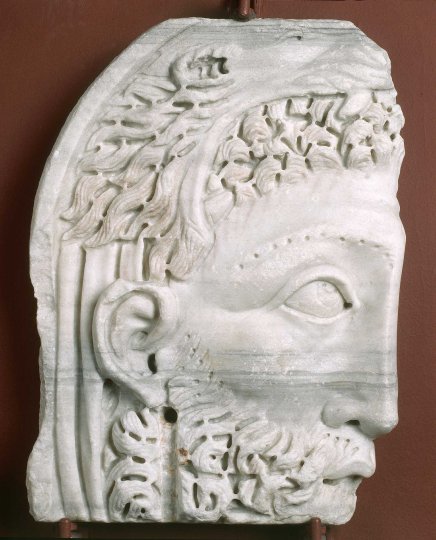I find ancient times very beautiful. Antiquity seen by a collector
20.09.2017-31.12.2019
The exhibition "I find ancient times very beautiful. Antiquity seen by a collector" includes works from three Krakow collections: the Princes Czartoryski Museum, the Potocki Palace in Krzeszowice and the National Museum in Krakow.
The objects are placed in two rooms, representing the sphere of women and men, both in the world of people and gods. Mythological world pervades the real world, creating a unified whole in the way it was perceived in the ancient times. The first room is devoted to showing different aspects of the men's world. The group of sculptures includes marble copies of bronze Roman statues of the Discophorus and the Doryphoros by Polyclitus, one of the most important Greek sculptors from the Classical Period (5th century BC). These are accompanied by a statue of Mercury, an example of 19th-century reconstruction activities, and a sculpture which once was used as a fountain decoration depicting the god of a river and a boy with an amphora. Items gathered into display cases depict the Egyptian gods Amon, Osiris, and Serapes, as well as mortals in the process of offering a sacrifice, standing before the face of the god and fulfilling their public functions. In the group of warriors, there are Assyrian and Roman reliefs, as well as Greek vases decorated with scenes of battles and a pyrrhic war dance. The sporting and martial motifs are combined in the displayed head of Heracles, the most important Greek hero. The other group of objects is of Dionysian character. Those are marionettes and figures of actors, representations of a dead person feasting in the beyond, a fragment of a relief with the scene of making a sacrifice. Representations of cupids on Roman sarcophagi is related to the Dionysian sphere, they show the passing of human life and the hopes of eternal life - in a symbolic scene with a hare.
At the background of a fragment of Landscape with Classical Ruins and Figures by Marc and Sebastian Rossi (1725-1730), there is a Roman statue of a sleeping nymph, forest half-goddess. This room shows depictions of goddesses – Isis, Aphrodite, and Dianna, as well as portraits of Egyptian, Greek, Roman, and Etruscan women. They represent maternal care, concern for beauty, and the independent aspect of the female spirit. Some of the women hold mirrors or fans; others, a basket, a tambourine or the musical instrument known as a sistrum – objects indicating involvement in religious activities. The beauty of a woman was thought to be a well-cared-for appearance. Cosmetic utensils were made from a variety of materials and were artistically shaped. They were used to prepare and preserve lipsticks or fragrant ointments. These items are accompanied by jewelry – including some costly items, like gold, and some cheaper items like ceramics. Among them are a delicate bracelet decorated by the Etruscan method of filigree and granulation, as well as commonly worn necklaces made of glass which could also be used as a musical instrument called the menit. The practice of decorating marble sculptures with metallic elements is represented in an example of Aphrodite’s head with a golden earring.
Among the objects at the exhibition, there are those of highest value, but also a few fakes, whose presence in the 19th-century museum collections is a natural effect of the development of collection market, buyers' interest in antique objects, and shaping of the knowledge about works of art. Those fake objects show the virtuosity of craftsmen and the difficult choice that the buyer of antique objects had in the 19th century.
